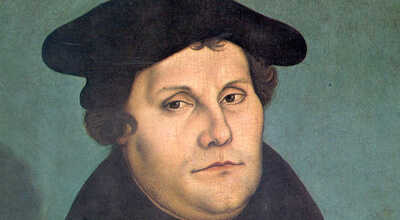A brief look at a major shift in church history
The Protestant Reformation began in Germany in 1517 with Martin Luther, a Saint Augustine friar and professor. Luther wrote and published The Ninety-Five Theses as a protest of clerical abuses aimed at the hierarchy of the Roman Catholic Church.
He is said to have posted his Ninety-Five Theses to the main door of The Castle Church in Wittenberg. At the time, the church was a repository for one of Europe’s largest collections of Catholic relics. The storehouse included some extreme oddities such as vials of the milk of the Virgin Mary—but viewing the antiquities was said to bring official relief from temporal punishment for sins in purgatory.
However, Luther was primarily disgusted with “indulgences.” The Catholic Church sold these as part of a fundraising scheme and propagated them upon the people in both convoluted language and theology:
Buying an indulgence would enable the payee to partly or wholly avoid—depending on specific Church restrictions—God’s temporal punishment due for sins committed but forgiven.
Numerous religious voices fell in line to support Luther’s initial protest. The discontent spread quickly, due largely to the efficiency of the printing press. It enabled copies of The Ninety-Five Theses and other documents and ideas to be disseminated widely.
Paralleling the events of the Reformation in Germany was a similar movement in Switzerland under Ulrich Zwingli, a Zurich pastor.
Some of Zwingli’s followers, however, believed the German Reformation was too conservative.
Ultimately, ensuing protests in assorted locations spawned new groups or movements—such as Calvinism, which has its basis in the writings of John Calvin, a French theologian.
In 1521, Luther was excommunicated from the Church by Pope Leo X, who had also condemned the Reformation.












































